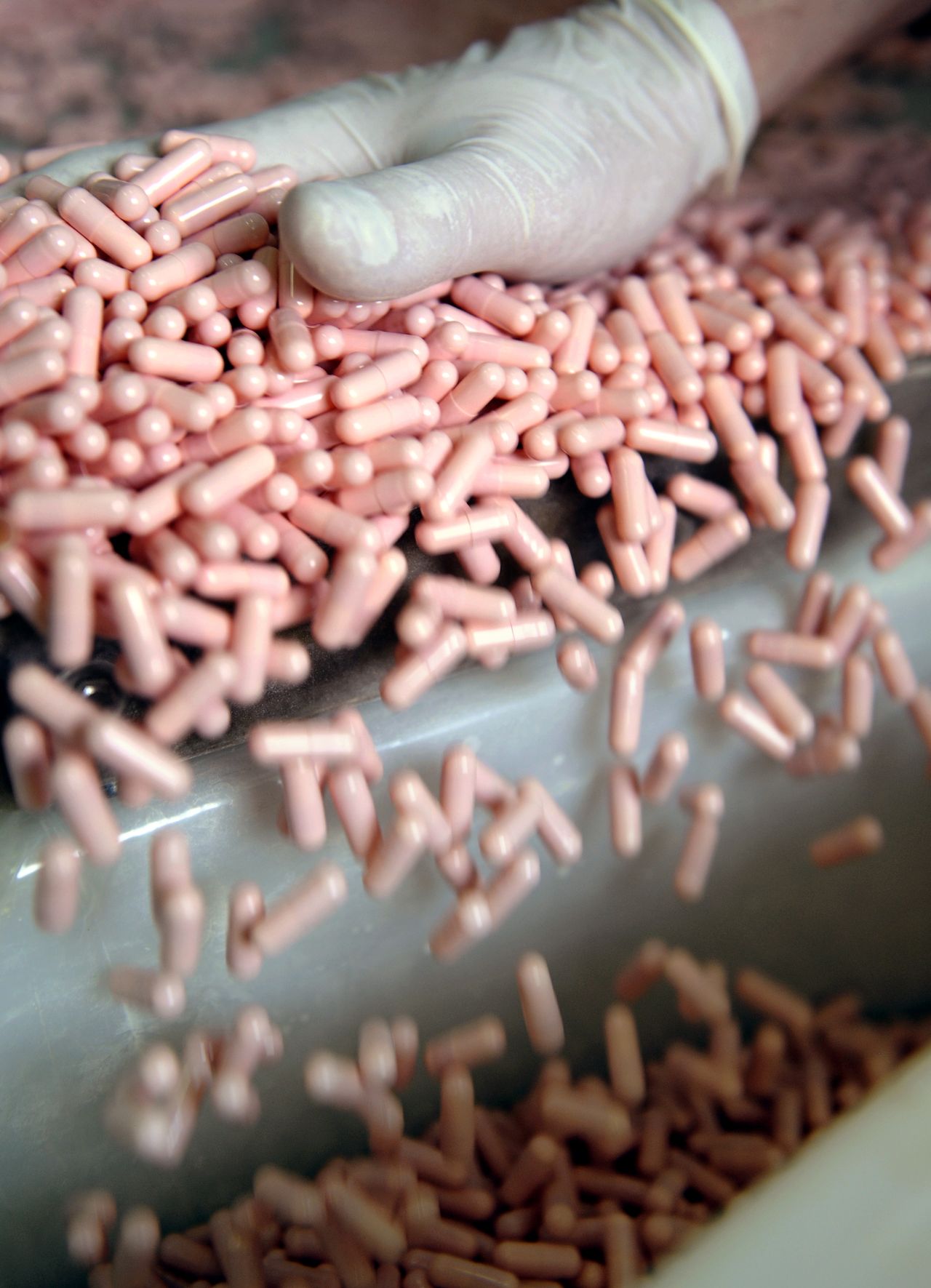Can you teach your body to heal without medicine?
In an echo of Pavlov's famous conditioning experiments, studies show we can train our bodies into thinking we've had medicine

Marette Flies was 11 when her immune system turned against her. A cheerful student from Minneapolis, she had curly brown hair and a pale, moon-shaped face, and she loved playing trumpet. But in 1983, she was diagnosed with lupus, a condition in which the immune system destroys the body's healthy tissues.
It ran rampant, attacking her body on multiple fronts. She was given steroids to suppress her immune system; the drugs made her face swell up, and her hair fell out. But despite the treatment, her condition worsened over the next two years, causing inflamed kidneys, frequent headaches, seizures, and high blood pressure.
By 1985, antibodies were attacking a vital clotting factor in Marette's blood, causing her to bleed uncontrollably. It got so bad that her doctors considered giving her a hysterectomy, because they were worried that when her periods started she might bleed to death. She took drugs, including barbiturates, antihypertensives, diuretics, and steroids, but her blood pressure kept rising. Then her heart started to fail, and her doctors reluctantly decided to give her Cytoxan, an extremely toxic drug.
Subscribe to The Week
Escape your echo chamber. Get the facts behind the news, plus analysis from multiple perspectives.

Sign up for The Week's Free Newsletters
From our morning news briefing to a weekly Good News Newsletter, get the best of The Week delivered directly to your inbox.
From our morning news briefing to a weekly Good News Newsletter, get the best of The Week delivered directly to your inbox.
Cytoxan is very good at suppressing the immune system. But it causes vomiting, stomachaches, bruising, bleeding, and kidney and liver damage, and increases the risk of infections and cancer, and at the time its use in humans was experimental. Karen Olness, a psychologist and pediatrician now at Case Western Reserve University in Ohio, was helping Marette cope with the stress and pain of her condition, and she was concerned that if lupus didn't kill the teenager, this new drug might. Then Marette's mother showed Olness a scientific paper she had seen. The author claimed to have slowed lupus in mice — but with just half the usual dose of Cytoxan.
The results were part of a well-known and seemingly mundane phenomenon that has been driving a quiet revolution in immunology. Proponents hope that the process, by allowing doctors to cut drug doses, will not only minimize harmful side effects but also slash billions from health-care costs, transforming treatment for conditions such as autoimmune disorders and cancer. The secret? Teaching your body how to respond to a particular medicine, so that in the future it can trigger the same change on its own.
Ever eaten a favorite food that made you sick — prawns, say — and discovered that for weeks or months afterward, you couldn't face eating it? This effect is called learned or conditioned taste aversion, and it makes sense: Avoiding foods that have poisoned us in the past protects us from getting ill again.
In 1975, Robert Ader, a psychologist at the University of Rochester in New York, was studying taste aversion in rats and got an utterly mystifying result. Ader gave his animals saccharin solution to drink. Rats usually love the sweet taste, but Ader paired the drink with injections of Cytoxan, which made them feel sick. When he later gave the animals the sweetened water on its own they refused to drink it, just as he expected. So to find out how long the learned aversion would last, he force-fed this harmless drink to them using an eyedropper. But the rats didn't forget. Instead, one by one, they died.
Sign up for Today's Best Articles in your inbox
A free daily email with the biggest news stories of the day – and the best features from TheWeek.com
After more experiments, Ader concluded that when the animals received saccharin and the drug together, they hadn't just associated the sweet taste with feeling sick; they'd also learned the immunosuppression. Eventually, they'd responded to the sweetened water just as they had to the drug. Even though the second phase of the experiment involved no drug at all, the water Ader fed them suppressed their immune systems so dramatically that they succumbed to fatal infections. In other words, their bodies were reacting to something that wasn't really there, just because the circumstances made them expect it.
The phenomenon in which we learn to associate a contextual cue with a physiological response is well known. It's called conditioning, and was discovered in the 1890s by the Russian physiologist Ivan Pavlov, who noticed that dogs learned to associate his presence with being fed, so that his arrival caused them to salivate even if he had no food. He showed that different signals, such as a buzzer or electric shock, could all be made to trigger the same response.
Such learned associations are an important part of our daily lives. Cues prepare the body for important biological events such as eating or sex, and they trigger responses that have evolved to help us avoid or flee from danger. Exposure to a stimulus we associate with a previous allergic reaction, such as a grassy field or fluffy cat, can make us cough or sneeze even if no physical allergen is present, while previously scary situations, like a barking dog or an enclosed space, can induce a state of fight-or-flight.
Ader's result was revolutionary because it showed that learned associations don't affect just brain-regulated responses like nausea or salivation. His rats proved that these associations influence immune responses too, to the point where a taste or smell can make the difference between life and death. The body's fight against disease, his experiment suggested, is guided by the brain.
In fact, a similar discovery had already been made. In the 1920s, Russian researchers at the University of St. Petersburg were following up on Pavlov's work, to see which other physiological responses could be conditioned.
Among them was the immunologist Sergey Metalnikov. Instead of suppressing the immune system, as Ader would, Metalnikov wanted to boost it. In one experiment, he repeatedly warmed guinea pigs' skin and at the same time gave them injections that triggered an immune response. Then he gave them and another group of unconditioned guinea pigs a normally lethal dose of Vibrio cholerae bacteria, while warming both groups' skin. The unconditioned animals died within eight hours, whereas the conditioned ones survived an average of 36 hours, and some of them recovered completely. Their response to a learned cue — heat — appeared to have saved their lives.
In a 1982 study, Ader used conditioning to treat mice that had a lupus-like disease. He trained them to associate Cytoxan with saccharin solution, just as in his original experiment. After they learned the association, he kept giving the mice sweetened water along with half the usual drug dose for lupus. Compared with mice that received the same dose but weren't conditioned, they lived longer, and their disease progressed more slowly. This was the paper that Marette's mother had seen.
Karen Olness telephoned Ader and asked: Would his conditioning work on Marette? Could they train her immune system to respond to a lower Cytoxan dose than normal, sparing her the worst of the drug's toxicity? Ader agreed to try.
The first question was what taste to use. "We had to choose something that was unique, that she hadn't experienced before," says Olness. She considered vinegars, horehound, eucalyptus chips, and various liqueurs before finally settling on a combination of rose perfume and cod liver oil.
Marette's treatment started the next morning. She sipped the cod liver oil as Cytoxan flowed through an IV line into a vein in her foot. Meanwhile, Olness uncapped the rose perfume and waved it around the room.
They repeated this bizarre ritual once a month for the next three months. After that, Marette was exposed to cod liver oil and perfume every month, but received Cytoxan only every third month. By the end of the year, she had received just six doses of the drug instead of the usual 12.
Marette responded as well as her doctors would have hoped from the full drug regimen. The clotting factor reappeared, and her blood pressure returned to normal. She went to college, where she played trumpet in the school band.
At nine o'clock every morning and evening, an alarm goes off on Barbara Nowak's mobile phone. When she hears it, the 46-year-old geologist sits down at her kitchen table in Sprockhövel, northern Germany, and takes a powerful cocktail of immunosuppressant drugs. But today there's a change in her routine. Before swallowing the pills, she downs a drink. It's sweet, bitter, neon green — and tastes strongly of lavender.
In 1988, when she was 19, Nowak lost her kidneys to lupus. Receiving a donated kidney transformed her health. "It's another life," she says. But there's a downside. She's dependent on twice-daily medication to suppress the immune responses that would destroy her transplant — drugs that slowly poison the very organ she's trying to save.
So Nowak is drinking this gaudy concoction as part of a pioneering trial. The green drink is an updated version of Marette's rose and cod liver oil, invented to test conditioned responses. Manfred Schedlowski, a medical psychologist at the University of Essen in Germany, wanted something strange and unforgettable that stimulates several senses at once. He hit on strawberry milk mixed with green food coloring and essential oil. Its bright color and overwhelming lavender flavor create a bewildering mix of sensory cues.
So far, Schedlowski has shown that after the drink is associated with CsA, a drug similar to Cytoxan, it reliably induces immunosuppression in healthy volunteers, creating on average 60 to 80 percent of the effect of the drug. But will it work in sick patients?
In the learning phase of the study, Nowak drank the lavender milk alongside her drugs, morning and evening, for three days. Then, after a two-day break, came the "evocation" phase, using the drink to try to amplify the effect of her medication. She again downed the drink with her drugs, but also drank it two extra times during the day, along with a placebo pill.
A 2013 trial was promising: In all four patients, adding the green drink suppressed immune-cell proliferation by up to 40 percent more than drugs alone. Now Nowak is part of a larger study of about 20 patients. If that works, too, the next step will be to test whether the conditioned response can be maintained while doses start to be reduced.
Besides helping with organ transplants, there's a plethora of uses that conditioning might have, by reducing harmful side effects or simply making treatment more cost-effective. Other possibilities include the relief of allergies and autoimmune conditions.
Ader carried out a small study in 1996 that paired Cytoxan with aniseed-flavored syrup in 10 people who had multiple sclerosis. When later given the syrup alongside a placebo pill, eight of them responded with immunosuppression similar to that produced by the active drug. In another study, published shortly before he died in 2011, Ader reported that quarter- or half-doses of corticosteroid ointment plus conditioned response could control psoriasis just as well as a full drug dose.
Animal studies hint that the approach might also be useful in the treatment of some cancers. Researchers at the University of Alabama, Birmingham, have trained mice to associate the taste of camphor with a drug that activates white blood cells that attack tumors. Then they transplanted aggressive tumors into the mice. The animals given doses of camphor survived longer than those treated with immunotherapy, and in one experiment, two mice defeated their cancer altogether, despite receiving no active drug.
Years of research are required before conditioning regimes for cancer or transplant patients reach the clinic, but Schedlowski says the principle could be used much sooner to reduce drug doses for conditions such as asthma or arthritis. Someone could be prescribed a suitable drug, and after two or three weeks of taking it regularly could switch to a pack in which real pills were interspersed with identical placebos.
But the idea is not widely accepted. Reducing drug doses isn't attractive to drug companies, but a wider problem is that for most doctors and scientists, the concept of treatments with no pharmaceutical component just makes no sense.
Schedlowski is steadfastly optimistic that the benefits of conditioning are too great to ignore. "Ten years ago, nobody believed us," he says. "Now, journals are much more open-minded to this kind of approach."
Still, there's a long way to go. Ader remains barely known, even among immunologists. Schedlowski leads one of the only teams researching conditioned immune response. "I like to say we're the best in the world," he jokes. "Because there is nobody else!"
Excerpted from an article that originally appeared in MosaicScience.com. Reprinted with permission.
-
 5 inexcusably hilarious cartoons about pardon-happy presidents
5 inexcusably hilarious cartoons about pardon-happy presidentsCartoons Artists take on raising stakes, pearly gates, and more
By The Week US Published
-
 Spicy air-fried peking duck recipe
Spicy air-fried peking duck recipeThe Week Recommends This delicious recipe is ideal to serve at Lunar New Year celebrations
By Rebekah Evans, The Week UK Published
-
 The grooming gangs scandal, explained
The grooming gangs scandal, explainedThe Explainer The Government has come under fire for refusing to hold a national inquiry into the abuse of young girls by networks of men
By The Week UK Published